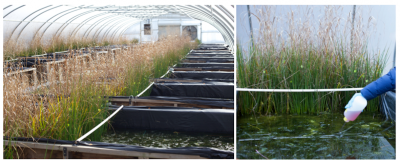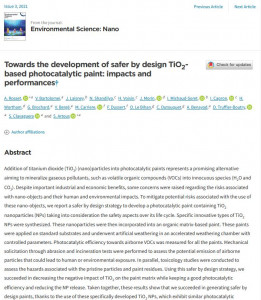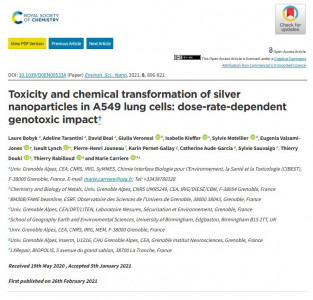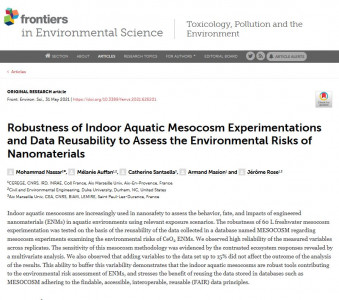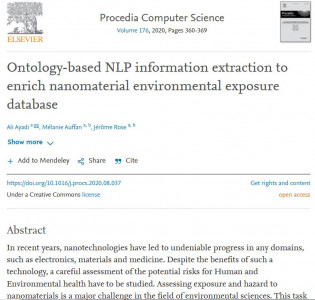What happens to gold nanoparticles in the environment?
Natural and engineered nanomaterials are particles with one dimension <100nm. They can have unique reactivity compared to larger particles with the same chemical composition. However, there is still limited understanding of how these nanophases will behave once released into complex natural ecosystems.
The Center for Environmental Implication of NanoTechnology (CEINT) built a facility containing 30 large-scale freshwater wetland mesocosms to study the fate of engineered nanomaterials when added to natural freshwater emergent wetlands over long times at low dose. These ~3m3 mesocosms undergo seasonal changes and contain all of the complexity of a real emergent freshwater wetland and are therefore great tools for understanding how nanomaterials will behave in real environments. The mesocosms contained:
- an upland zone, not flooded, containing soil and terrestrial plants,
- a transition zone (soil on a slope) that is wet or dry depending on the water level and it contains juncus (plants),
- an aquatic zone filled with ~250L of water that contain sediment at its bottom, fish, clams, macroinvertebrates and aquatic plants.
The initial goal of our study was to assess how a nanoparticle that dissolves will behave in comparison with a stable, inert one. We chose Au NPs as a NP tracer because, according to the literature and conventional wisdom, they were “inert” and could trace how NPs move around between different environmental compartments. In this particular study, we added about 75mg of Au NPs each week for 6 months. This is equivalent to about 70 parts-per-billion in the water column. We used a long-term low concentration input of Au NPs to best mimic how they might be introduced into the environment, e.g. in low doses in wastewater treatment. To measure Au NP fate, we sampled sediment, soil, plants, and organisms every three months. We also monitored the environmental conditions daily or weekly to fully characterize the system (for instance light, temperature pH, oxygen, carbon dioxide). For the compartments accumulating the most Au (plants in this case), we measured the speciation of the gold using synchrotron X-ray absorption spectroscopy at the Stanford Synchrotron Radiation Lightsource on beamline 11-2. We could not have done this work without access to SSRL.
After six months, we realized that the aquatic plants accumulated very high concentrations of Au (the majority of the Au added into the system). When we used XAS to measure gold speciation in the aquatic plants, we realized that all of the Au NPs were oxidized and transformed Au species that were not metallic, its initial speciation. This was surprising to us because Au is known to be stable against oxidative dissolution in toxic waters, and thus had been used as a tracer for nanoparticles in more than 20 prior studies. We then set out to determine the mechanisms responsible for dissolving the Au NPs. We hypothesized it had to be a biologically driven mechanism. We extracted the microorganisms living on the aquatic plant surface (called biofilm). We characterized the type of microorganisms present, their capacity to dissolve Au NPs, and then correlated this with their ability to release cyanide (which is a molecule known to dissolve and complex Au).
Biodissolution can lead to different routes and rates of transport and bioaccumulation, different toxicity, and different rates of transfer into the food chain compared to the nanoparticulate form. Our findings suggest that the assumption of Au NP stability may not be a good one. We may need to rethink the conclusions from the 20+ papers that have used Au NPs as “particle tracers” and made conclusions about bioavailability and toxicity based on the assumption that the Au NPs had not dissolved. Our study demonstrates that biotransformation are happening in complex environments, even for nanoparticles that are thermodynamically stable in water without organisms, and that these transformations can happen very quickly. Before this study, no one had demonstrated that Au NPs could dissolve in freshwater aquatic environments. In fact, the opposite was dogma. Cyanide is a very strong complexing agent, and similar biotransformation are likely to occur with other metallic nanoparticles as well. This study also points to biofilms of freshwater plants as an interesting environmental compartment to study to better understand its role in the biogeochemical cycling of engineered nanomaterials, and in metals in general.
____________________________________________________________________________________________________________________________________________________________________________
This article have been published in Nature nanotechnology, to learn more:
Gold nanoparticle biodissolution by a freshwater macrophyte and its associated microbiome
Astrid Avellan, Marie Simonin, Eric McGivney, Nathan Bossa, Eleanor Spielman-Sun, Jennifer D. Rocca, Emily S. Bernhardt, Nicholas K. Geitner, Jason M. Unrine, Mark R. Wiesner & Gregory V. Lowry
Astrid Avellan, who is the main author and write this abstract made her thesis in CEREGE (European Centre for Research and Education in Environmental Geosciences) with Serenade's members : Armand Masion et Clément Levard.
Other articles which talk about this discovery :
- Water matters to metal nanoparticles, Carnegie Mellon College of Engineering.
- All That Is Gold Is Not Biochemically Stable, Duke university.
- Gold Nanoparticle Biodissolution by a Freshwater Macrophyte and Its Associated Microbiome, Stanford Synchrotron Radiation Lightsource.






